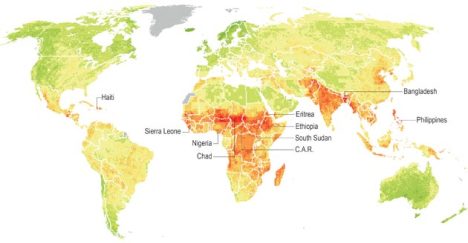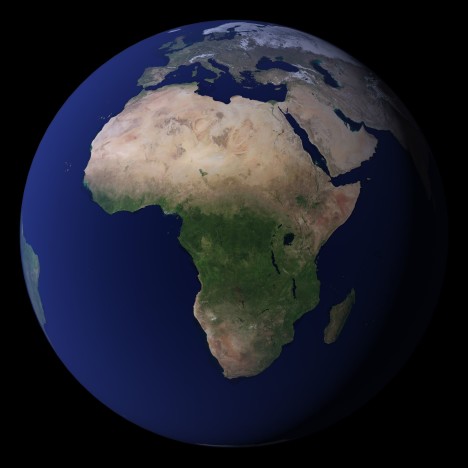Climate Change
- 28 Jul, 16
- by Admin
- in Climate Change
-
 0
0
-

 0
0
By 2050 Africa’s fast-growing cities like Lagos and Kinshasa will have populations of over 30 million. The World Health Organisation estimates air quality to be responsible for more than 500,000 deaths a year in Africa from both indoor and outdoor air pollution. More…
- 09 Jan, 15
- by Admin
- in Climate Change
-
 0
0
-

 0
0
Increases in greenhouse gases have led to unprecedented regional warmth in the Arctic. A 2013 article published in Geophysical Research Letters has shown that temperatures in the region haven’t been as high as they currently are since at least 44,000 years ago and perhaps as long as 120,000 years ago. The period of 1995-2005 was the warmest decade in the Arctic since at least the 17th century, with temperatures 2 °C (3.6 °F) above the 1951-1990 average. More…
- 03 Jan, 15
- by Admin
- in Climate Change
-
 0
0
-

 0
0
In its recently released Climate Change and Environmental Risk Atlas for 2015, global risk analytics company Maplecroft identifies 32 countries where the impacts of climate change and food insecurity could lead to increased civil unrest and violence. The Atlas provides comparable risk data across 26 separate issues, including climate change vulnerability and food security, as well as emissions, ecosystem services, natural disasters and regulation. More…
- 10 Dec, 14
- by Admin
- in Climate Change
-
 0
0
-

 0
0
Many people have likely heard the phrase “global warming” and “greenhouse gases” on the news, in school or in passing. Some of the most common greenhouse gases include carbon dioxide, methane and nitrous oxide. They all have similar effects in high concentrations in the atmosphere. More…
- 07 Dec, 14
- by Admin
- in Climate Change
-
 0
0
-

 0
0
On 2nd November 2014, the Intergovernmental Panel on Climate Change (IPCC)—the world body for assessing the science related to climate change—released the final component of its Fifth Assessment Report, the Systhesis Report in Copenhagen, Denmark. More…
- 06 Dec, 14
- by Admin
- in Climate Change
-
 0
0
-

 0
0
In the 1970s and 80s, people around the world grew increasingly alarmed as research revealed that chemicals we were producing, such as
chlorofluorocarbon (CFC), used in refrigeration, had started destroying the crucial ozone layer, high up in the atmosphere, that protects us from the sun’s harmful UV radiation. More…
-
« Previous
1
2





